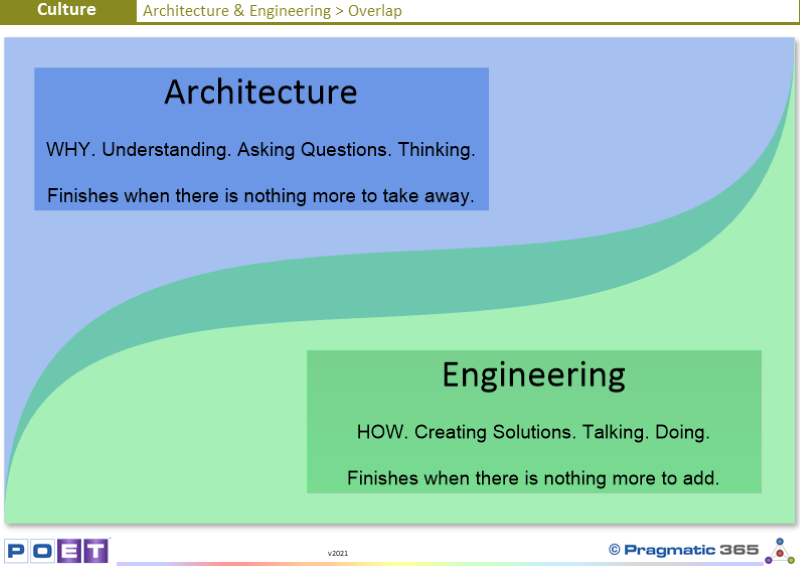
In practice, there is of course an overlap between
Architecture and Engineering. The overlap may be small or may be large
depending on the problem in hand. This tends to decide whether one person is
required to perform both roles or if two people who specialise in each are
required.
In this day and age, thinking about things seems to be
viewed as a very bad thing as no discernible progress is being made. It should
be noted that all the major advancements since time began have come from people
thinking about things rather than doing - at least initially. This is not to
say that everyone should sit around thinking about things and not doing
anything. Doing things informs thinking and thinking informs doing. This is the
yin and yang where balance must be achieved for best results and progress. No
one ever suggested that people should stop doing things, but it is common for
people to suggest that people should stop thinking about things “Just do it!” -
not explicitly because when you say it explicitly, as I have just done, it
sounds ludicrous in the extreme, but in practice, in life, in the day to day
run of things, thinking is routinely put on the back burner as the next urgent
(but probably unimportant) thing becomes the focus.
...to read more, please Login or Register